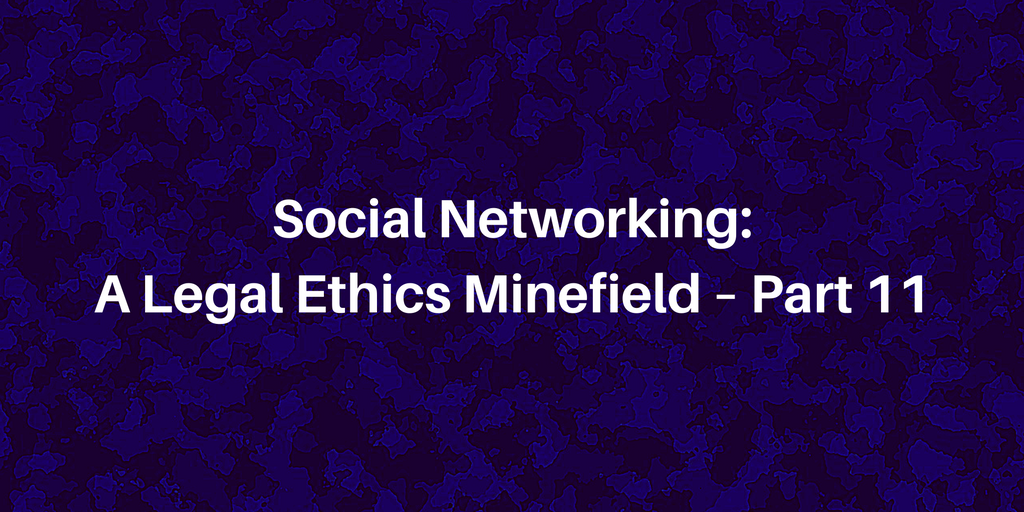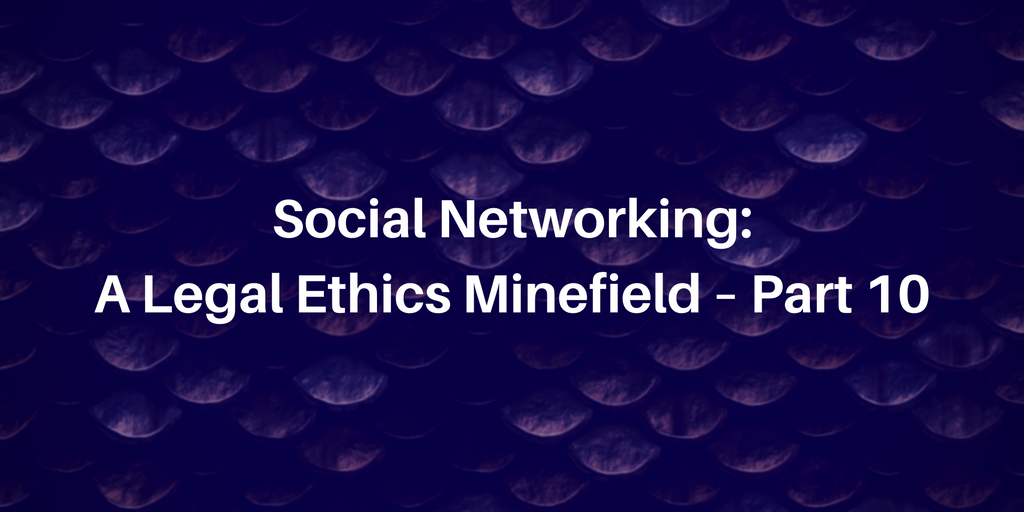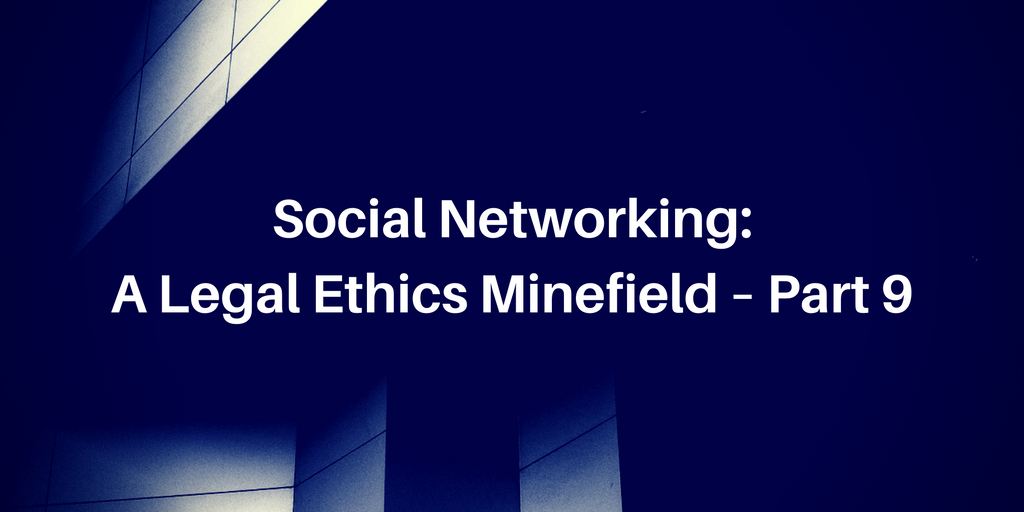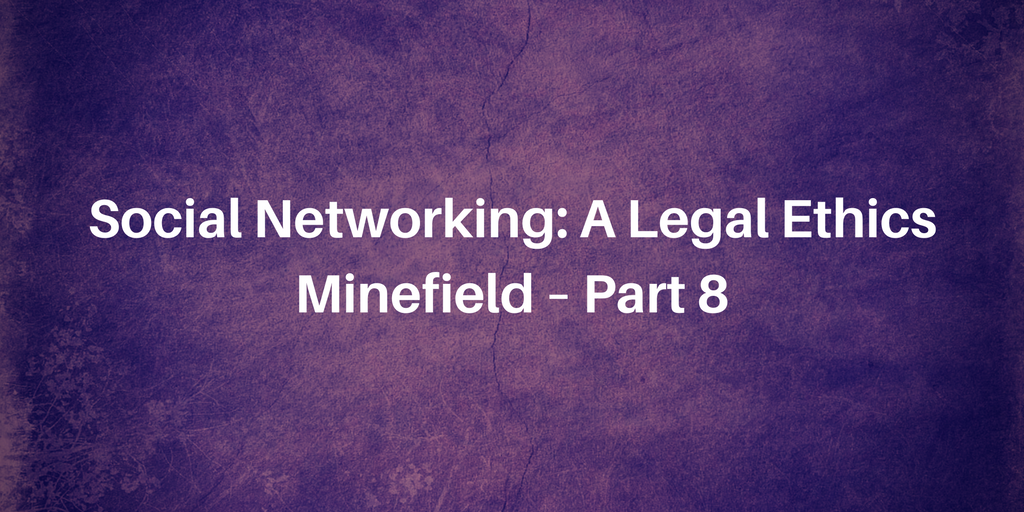 Twitter, like many public-viewing social networking websites, is constructed so that those participants with the most “followers” gain the most attention from their posts, reach the most users, and are therefore seen as more knowledgeable, visible and important within...
Twitter, like many public-viewing social networking websites, is constructed so that those participants with the most “followers” gain the most attention from their posts, reach the most users, and are therefore seen as more knowledgeable, visible and important within...
 The second problematic issue regarding social media as “advertising” and Model Rule 7.1 regards recommendations, endorsements and intentionally displayed social networking “connections” made by the lawyer. When a lawyer invites such recommendations or online displays...
The second problematic issue regarding social media as “advertising” and Model Rule 7.1 regards recommendations, endorsements and intentionally displayed social networking “connections” made by the lawyer. When a lawyer invites such recommendations or online displays...
 Given this explosion in online legal marketing through social networking, it is therefore clear why some attorneys might find such preclusive state-specific disclosures to be problematic. Furthermore, an attorney whom is licensed in multiple states might not know...
Given this explosion in online legal marketing through social networking, it is therefore clear why some attorneys might find such preclusive state-specific disclosures to be problematic. Furthermore, an attorney whom is licensed in multiple states might not know...
 For instance, because a single Twitter posting is limited to 140 characters in total, a lawyer may not be able to include the state-specific disclosure and disclaimer requirements within the 140 character limit – effectively limiting him from using the site as a...
For instance, because a single Twitter posting is limited to 140 characters in total, a lawyer may not be able to include the state-specific disclosure and disclaimer requirements within the 140 character limit – effectively limiting him from using the site as a...




